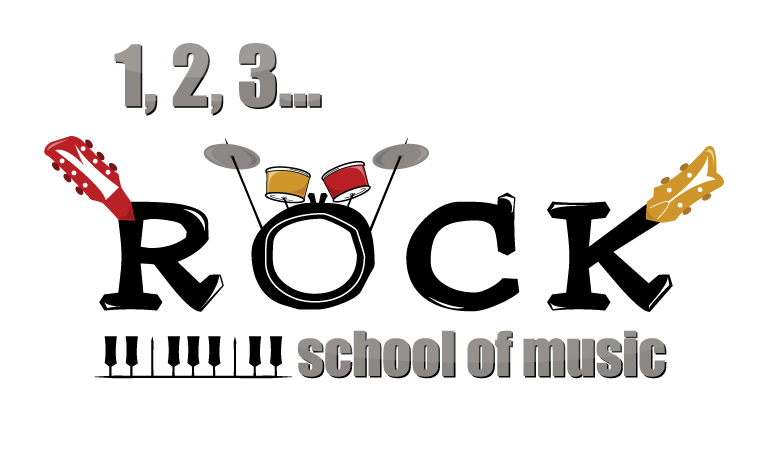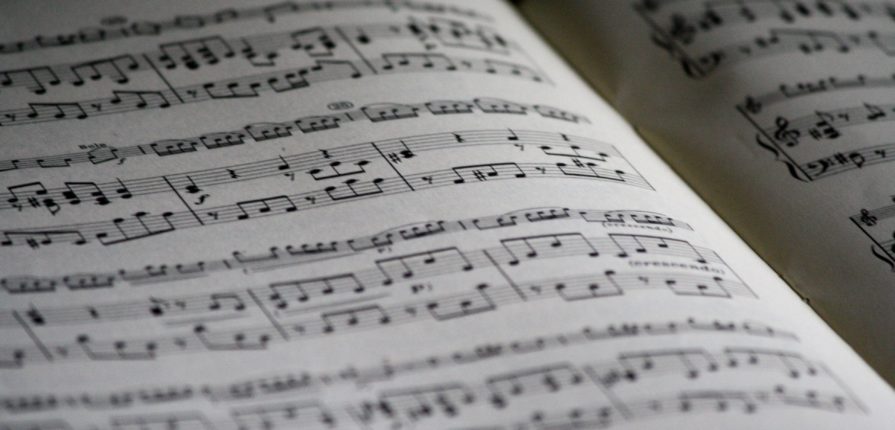Sight reading seems to be one of those challenges that either a beginning musician loves or has recurring nightmares. For those of us in the latter category, we’ve consulted with music educators who specialize in the critical skill of sight reading music to make it less scary and (maybe even) a little enjoyable!
––
December 26, 2017
Practice beforehand
Time signatures and key signatures are, well, the key to being a successful sight reader. For a quick review of how to understand time signatures and key signatures, check out our basic sheet music reading primer.
First, familiarize yourself with and practice a wide variety of time signatures so that you’re ready for any situation. You can mask a mistake in pitch much easier than one in rhythm. As the saying goes: “always count… never stop.” Here’s a website we found with helpful, free rhythm exercises.
Another suggestion is to print out some free manuscript paper. Write out various rhythms of half notes and quarter notes in 4/4 time. Next, do the same with quarter notes and eighth notes, then eighth notes and sixteenth notes. Play each of the rhythms as you write them or count/tap/verbalize them out loud, and mix-and-match them as you go along. That way, you’ll familiarize yourself with how they look on the page, and you’ll be prepared to perform each rhythm in any context.
Next, memorize your key signatures! A tip for reading SHARP (primary) key signatures is to look at the last sharp and move a half-step above that. In this example, your previous sharp is a C, so a half step up from C-sharp is D, meaning your key is D Major.

A tip for reading FLAT key signatures is to look at the second-to-last flat (reading left to right). In this example, your second-to-last flat is E, so you’re in E-flat Major. The exception to this rule is F major (or D minor) which only has one flat (B-flat).
Then, be sure to know your scales forward and backward. Practice singing or playing your scales, while reciting (or thinking of) the name of each note as you play it.
Along those lines, learning to sight sing, even if you’re not a vocalist, will help you sight read music for any instrument. Phrasing, intonation, and musicality are universal, and sight singing will help you practice those without having to concentrate so strictly on what your hands are doing.
Also be sure to practice, practice, practice sight reading music without looking at your hands. Knowing the feel of your instrument’s keys/frets/fingerboard is essential to sight reading music because your eyes will be focused on the piece. Sight reading is like training for a marathon; you need to practice your skills to keep them continuously. But, in the end, it will pay off! Sight reading is one of the greatest musical joys you will ever experience!
Right before playing
It goes without saying that first, you’ll want to look at the piece. Tap out the rhythm, including rests, then read through the notes and follow the overall structure so you’ll know where to go at repeat bars, D.C., Codas, Segnos and the like. Mentally commit changes in key or time, as well as accidentals, dynamics, and other markings. If you’re allowed, make helpful marks on your sheet music in any spots you anticipate having difficulties. Never leave home without your handy sheet music pencil!
Next, sound the piece out in your head. Pay attention to patterns, including scale and arpeggio fragments. If you recognize patterns ahead of time, the notes will be much easier to sight read, and it will free you up to focus on other parts of the piece.
The best musicians study the music carefully before playing. The reason they sound so good when they sight read a piece for the first time is that they’ve already examined the sheet music. While the director is handing out the sheet music, the best musicians are secretly scrutinizing it, studying the roadmap, looking for potentially awkward passages, tapping out the rhythm, trying out fingerings—all without playing a note!
When you begin the piece
Don’t forget to breathe! It sounds silly, but sight reading music, especially under pressure, can be daunting. Breathing can help you keep the tempo and follow your phrasing. For winds players and vocalists it’s even helpful to mark where you plan to breathe beforehand.
Similarly, try to relax and concentrate. Keep your eyes on the page, even if you make a mistake. Don’t correct yourself, just keep moving along. We promise it will get easier!
In review, our 10 Tips for Sight Reading Music Are:
- Familiarize yourself with a variety of rhythms.
- Memorize key signatures at-a-glance.
- Know your scales forward and backward.
- Practice playing without looking at your hands.
- Practice sight singing.
- Take a minute to examine the piece you’re sight reading. Tap out the rhythm, read through the notes and follow the structure.
- Mentally commit changes in key or time signature within the piece.
- Make markings on the paper (or on your tablet/iPad), if allowed.
- Sound the whole piece out in your head, recognizing patterns.
- Breathe, relax and keep going, even if you make a mistake.
- (Bonus tip) Never leave home without your sheet music pencil!
Do you have additional tips for sight reading music that you’ve found helpful? Please let us and your fellow musicians know in the comments below!
—
This article is a re-post, with small modifications, of “10 Tips and Tricks for Sight Reading Music” an article published on musicnotes.com
Click here to visit the original content.


